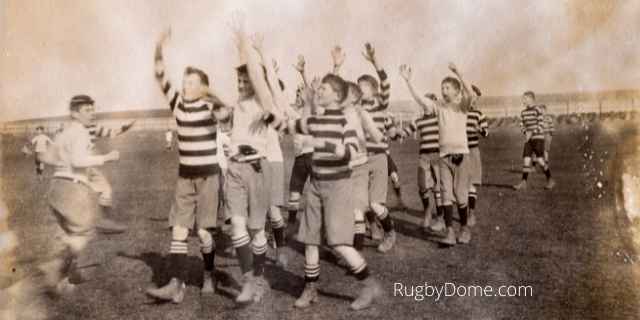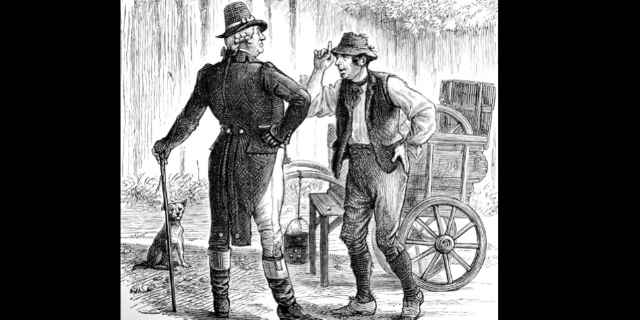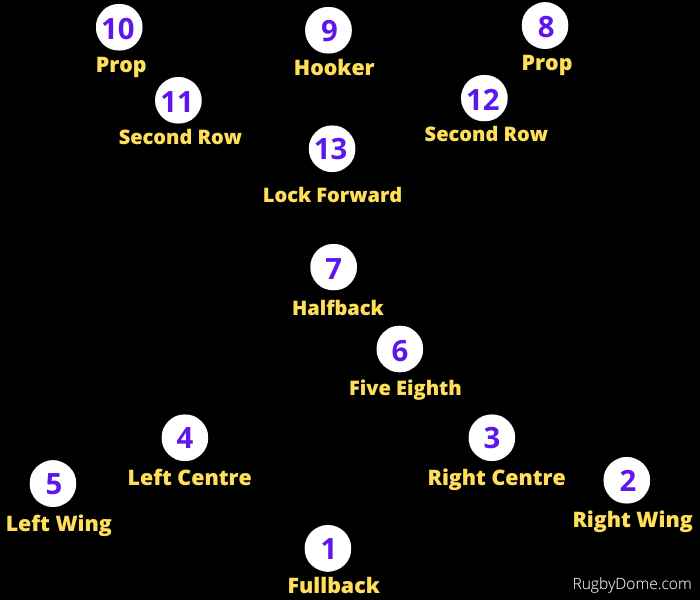The sport of Rugby League emerged in the late 19th Century in Northern England. At the time, the amateur ethos of rugby meant that players weren’t paid to play. They couldn’t even be compensated if injuries meant they couldn’t work.
This was a huge disadvantage for working-class players with manual jobs on a weekly wage. Rugby League grew out of the desire to professionalize the sport and compensate the players adequately.
The conflict led to a split of rugby into two distinct codes: Rugby League and Rugby Union. The rules of each sport began to diverge further in the early 20th century.
If you’re curious about the older form of the sport, check out our article on when Rugby Union went professional in England. Stay here for the most interesting parts of the early history of Rugby League, its initial growth, and the way it became fully professional.
Early Origins Of Rugby
Before the appearance of any form of rugby, there were kicking sports across England. They were played with a pig’s bladder and the rules were pretty much “anything goes” – short of murder.
Around 1823, a player decided to pick up the ball and run with it. This is usually attributed to William Webb Ellis, a boy attending school in the town of Rugby. This new approach spread to other schools and then was brought to universities.
The historic picture below shows opposing boys in a lineout. Of course, the lineout would be ditched by Rugby League. But we’ll come to that later.

But there was no general agreement on a set of rules. When schools and colleges played town teams, the team captains met before the match to decide on handling and scoring.
After several attempts to codify rules, a group of clubs met in London in 1863. The big discussion was whether to outlaw running with the ball and hacking.
Hacking referred to kicking in rucks and scrums. Players weren’t aiming for the ball, those thick boots were aimed squarely at opposition shins.
The clubs that wanted a kicking-only sport voted to form a governing body called the Football Authority i.e. the FA. This is now the English FA that governs soccer.
The clubs that wanted to handle the ball walked away from the FA and continued to play each other.
1871: Formation of the RFU
It took a few years, but twenty-one clubs assembled for dinner in Pall Mall (London) in 1871. They formed the Rugby Football Union (RFU) to govern the sport now known as Rugby Union.
A key part of the rules was that players could not be played. Rugby Union was strictly an amateur sport.
The sport was popular in the wealthy schools and universities in Southern England. But it also took hold in Northern England, especially Lancashire and Yorkshire. It was largely a working-class game unlike down south where it was more upper-class.
The amateur rules presented two major problems for working-class players. They were more likely to have shift work that reduced their opportunities to train and play. They were also more likely to be hit financially by a rugby injury that interfered with their ability to work.
Moving Toward The Great Rugby Split
Many of the Northern clubs wanted to compensate their players for injuries that made them miss work. But the Southern clubs with their “gentlemen players” were dead set against it.

There was increasing tension and general suspicion that some Northern clubs were making payments under the table. In 1892, two clubs in Bradley and Leeds were charged with “professionalism” i.e. payments.
The following year at an RFU meeting, Yorkshire clubs proposed small payments for players that missed work. They lost the vote.
When Did Rugby League Start?
In 1895, twenty-two clubs from Northern England met in the George Hotel in Huddersfield to agree to split from the RFU. They formed a breakaway league called the Northern Rugby Football Union, or Northern Union for short.
This marked the official birth of Rugby League, a distinct code of rugby with its own rules and structure.
Here’s a roll call of some of these clubs: Hull, Leeds, St Helens, Wakefield Trinity, Wigan, and Huddersfield FC itself.
However, there wasn’t a sudden massive change in the rules. In 1897, lineouts were the first big part of Rugby Union to be kicked out of play (so to speak) in the new sport.
The Northern Union eventually changed its name to Rugby League in 1922.
When Did Rugby League Go Professional?

Although the new sport came into being in 1895, the clubs officially stayed amateur for a few years.
Limited professionalism was introduced into Rugby League in 1898. However, there were strict rules in place. Players had to be in “bona fide” employment, which excluded jobs in pubs or billiard halls. Payments were also restricted to the playing season.
The many clauses and rules around payments became an administrative burden for the League authorities. Rugby League went fully professional in 1905 when all restrictions were removed from the clubs.
There were some who feared that clubs would go bankrupt through bidding wars, but this didn’t happen.
When Did Rugby League Move From 15 To 13 Players?
The sport of Rugby Union still has fifteen players on a team.
In 1905, the Rugby League clubs agreed to reduce teams from fifteen to thirteen players. The sport removed the two flankers at the back of the scrum.
In the picture below, a Union team has an extra player to the left and right of the League lock forward (number 13). If you want to know more, check out our article on rugby league positions.

When Did Rugby League Introduce “Play The Ball”?
That same year, there was another seismic change. When a player was tackled to the ground, the usual behaviour was that forwards from both sides would compete for the ball with a ruck or a scrum.
In 1905, Ruby League replaced rucks with the “play the ball” rule where tackled players get to their feet and heel the ball back to a teammate. This was to speed up the game and ensure that the ball didn’t disappear from view of the crowd during endless rucks and scrums.
Early Growth In Australia
Rugby League quickly took root outside of England, primarily in Australia, New Zealand, and France. In Australia, the game’s introduction in 1907/08 was spurred by similar class conflicts as in England.
The catalyst for this was an event the year before. A working-class player broker his arm in a Rugby Union match but received no compensation. This became a turning point in rising tensions over lack of pay.
Club representatives gathered in the Crystal Hotel in Sydney in August 1907 to discuss a new professional league. They agreed to form the New South Wales Rugby Football League. The first season was in 1908.
The New Zealand Rugby League was established in 1909.
Where Does American Football Fit In?
American Football was on a similar but separate trajectory in the United States.
It’s a common but mistaken belief that the American ball sport grew out of rugby. That’s not strictly true! Check out our article on the origins of American Football.